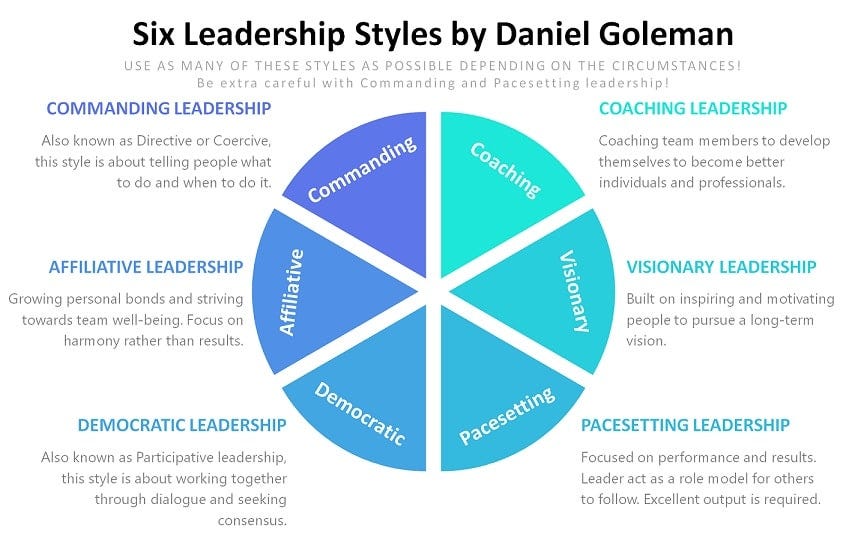Decoding Leadership: Exploring Goleman’s Six Styles
A Guide to Recognizing and Leveraging Leadership Styles in Your Workplace
Have you ever encountered Goleman's Leadership Styles? These six distinct styles, identified by author and psychologist Daniel Goleman, offer a profound insight: being a boss doesn't automatically make you an effective leader.
Why This Matters
Understanding these styles can help you decode the leadership approaches of those around you, including your own. Whether you're dealing with a challenging boss or leading a team yourself, recognizing these styles can enhance your professional relationships and effectiveness.
The Six Goleman Leadership Styles
Daniel Goleman's research on emotional intelligence unveiled six fundamental leadership styles:
Coercive Leadership
Also known as "directive" or "commanding," this style is ideal for crisis management, requiring swift and decisive actions to tackle immediate problems.
Authoritative Leadership
This "visionary" style involves setting clear goals and providing direction while allowing team members the freedom to determine how to achieve these objectives, fostering innovation.
Affiliative Leadership
Focused on creating a positive work environment, affiliative leaders prioritize emotional well-being and morale, though this can sometimes result in a lack of constructive feedback.
Democratic Leadership
This "participative" style values team input and collaboration, leading to innovative solutions but often involves longer decision-making processes.
Pacesetting Leadership
Pacesetting leaders lead by example, setting high standards and expecting the same from their team, which can be motivating but may lead to burnout if overused.
Coaching Leadership
Emphasizing personal development, coaching leaders invest in one-on-one mentoring, making it highly effective for long-term growth and improvement.
Reflect and Apply
Most leaders exhibit a blend of these styles, with certain ones being more dominant. Each style has its own strengths and weaknesses, particularly in relation to the current phase of your organization. By reflecting on your own and your manager’s leadership style, you can gain valuable insights to improve workplace dynamics and personal effectiveness.



